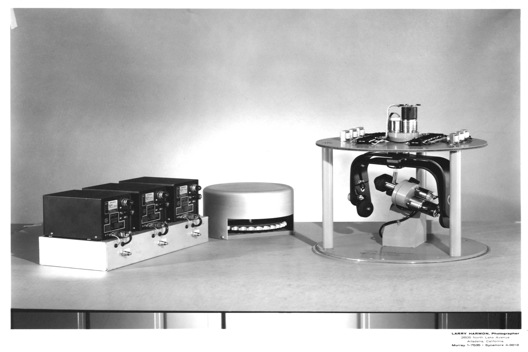 The Telescope is a 120-inch (3.0 meters) reflecting telescope located at the Lick Observatory on Mount Hamilton in California. At the time of installation it was the second largest telescope in the World. The largest at the time was the enormous 200 inch Palomar Hale Telescope. Later the Lick telescope was named the C. Donald Shane telescope.
The Telescope is a 120-inch (3.0 meters) reflecting telescope located at the Lick Observatory on Mount Hamilton in California. At the time of installation it was the second largest telescope in the World. The largest at the time was the enormous 200 inch Palomar Hale Telescope. Later the Lick telescope was named the C. Donald Shane telescope.
The inauguration of Boller and Chivens into the telescope and astronomical instrumentation field occurred in 1956. William Baustian, an alumnus of California Institute of Technology and a good friend of Harry Boller and Clyde Chivens, was then the chief engineer for all mechanical aspects of the telescopes and dome activities for the new Mount Hamilton 120-inch telescope.
Bill Baustian recommended that the Boller and Chivens Company should become involved in the competition for the manufacture and installation of the Right Ascension and Declination slow motion drive machinery for the telescope as well as an Automatic Dome and Slit Positional Transmitter device.
Boller and Chivens was successful in obtaining both of these two contracts. These contracts now became the Boller and Chivens Company’s first introduction into the major optical telescope field.
 Shortly after the Lick Observatory contracts, Boller and Chivens teamed with Josef Nunn Associates to design and manufacture a 36-inch fork type telescope mount. The telescope was initially called “A Light Bucket.” It is unknown where this telescope is now located. It would be the earliest complete telescope manufactured by Boller and Chivens.
Shortly after the Lick Observatory contracts, Boller and Chivens teamed with Josef Nunn Associates to design and manufacture a 36-inch fork type telescope mount. The telescope was initially called “A Light Bucket.” It is unknown where this telescope is now located. It would be the earliest complete telescope manufactured by Boller and Chivens.
This contract and plus another contract to build and deliver a second 36-inch reflecting telescope, again designed by Josef Nunn Company, launched Boller and Chivens into the modern telescope era.
Next: Additional Growth

One Response to The First Introduction to Astronomical Telescopes